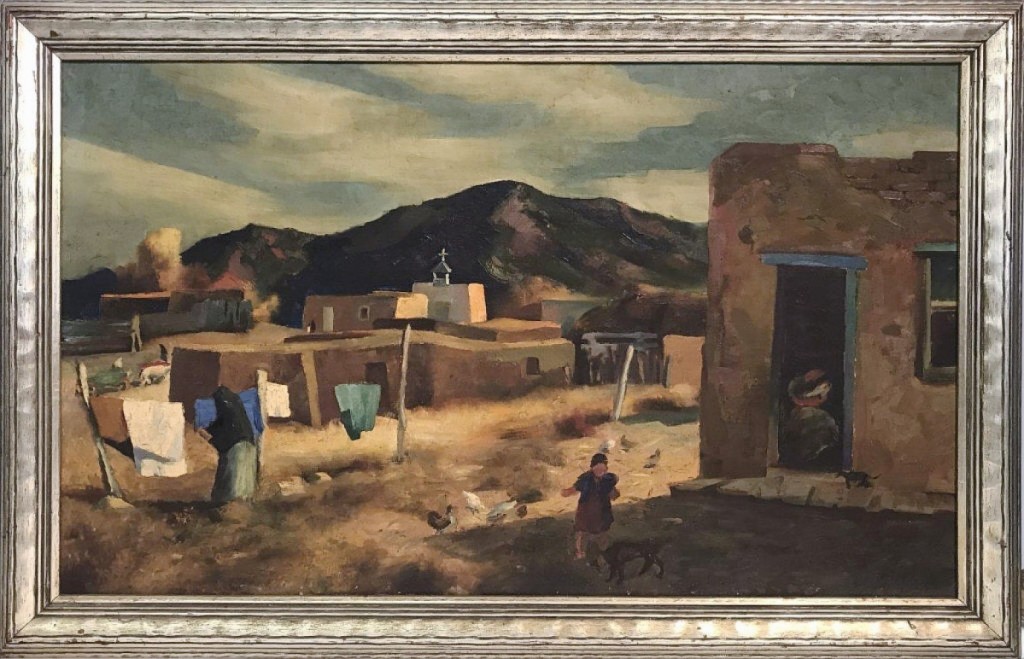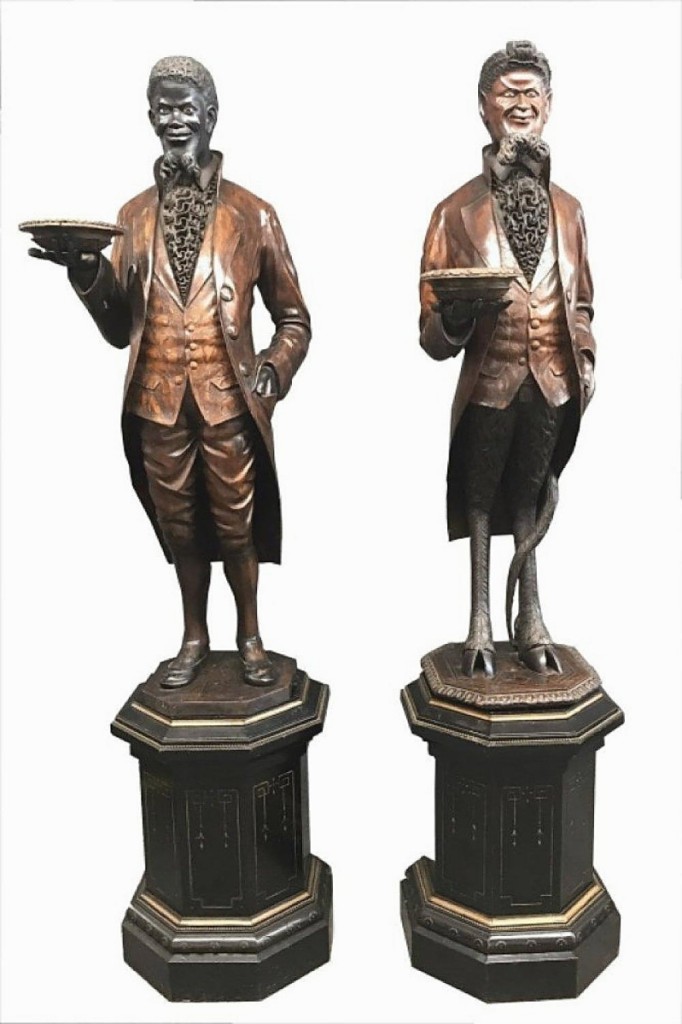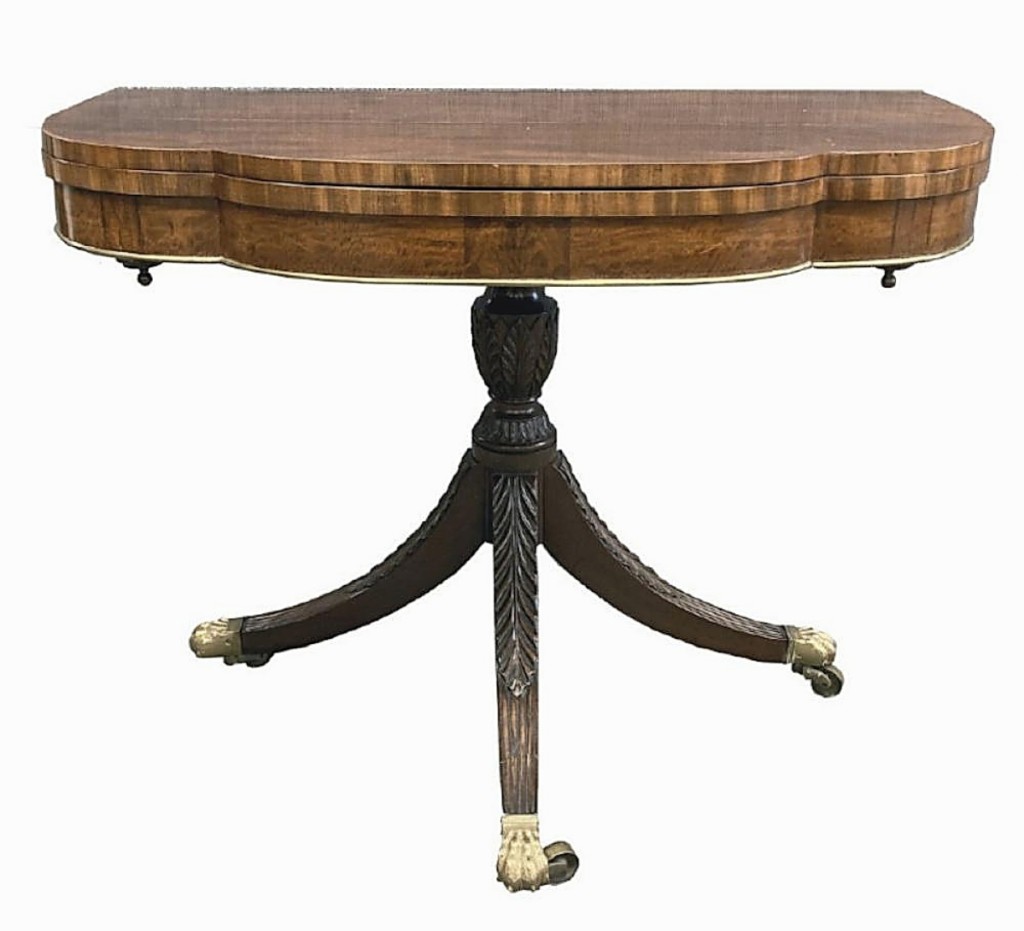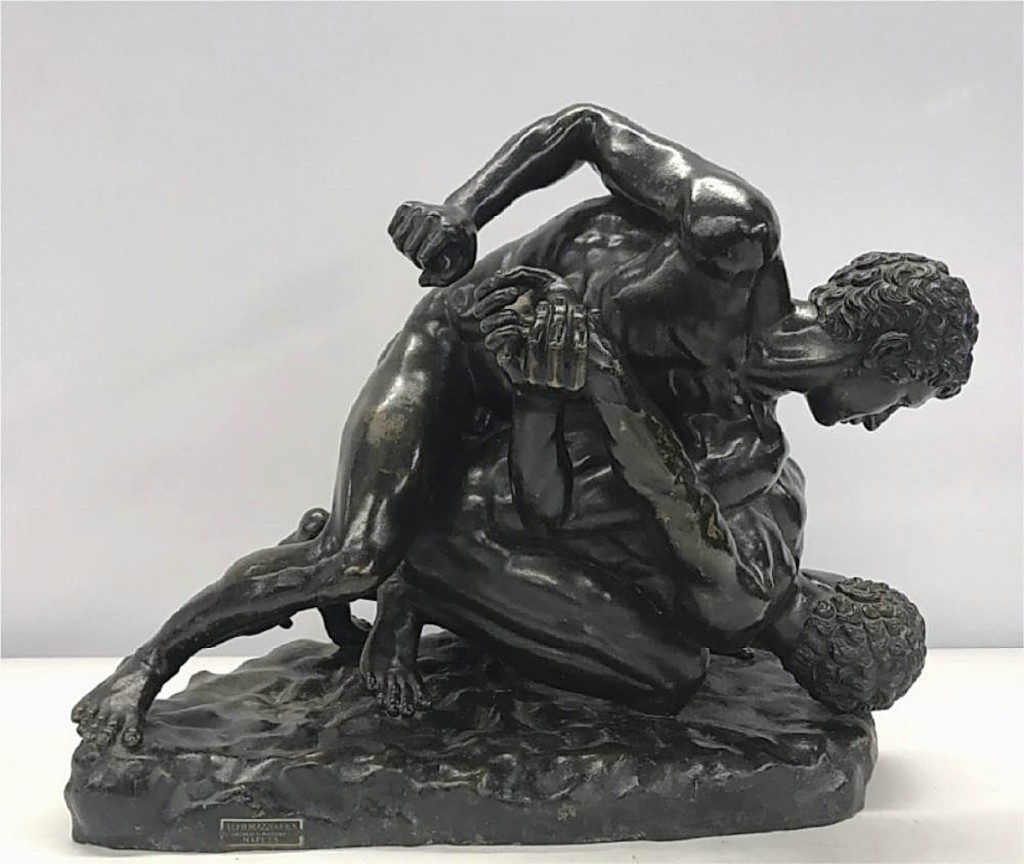
“It isn’t the top price for the artist, but it’s up there,” Carlsen said of Kenneth Adams’ “Autumn Afternoon,” which he had found in untouched original condition in a house in Schenectady, N.Y. It brought $156,000 from a trade buyer in Santa Fe, N.M., who prevailed against eight other phone bidders ($5/15,000).
Review by Madelia Hickman Ring, Photos Courtesy Carlsen Gallery, Inc.
FREEHOLD, N.Y. – The December 13 sale at Carlsen Gallery, Inc., featured 399 lots, was nearly 98 percent sold and achieved a total of more than $570,000. A majority of the sale was from the Troy, N.Y., estate of Frederick Downs Cawley (1948-2020), a longtime figure in historic preservation, a former executive director of the Preservation League of New York State who established and directed the graduate program in building conservation at the Rensselaer Polytechnic Institute School of Architecture.
“It was a very good sale. It was very well attended and received, and we’re thrilled with the results,” Russ Carlsen said when we reached him by phone after the event. “We had about 1,500 internet bidders and more than 100 individuals lined up to bid on the phone.”
A few smaller collections and estates contributed to the offerings but it was the only piece consigned from a collector in Schenectady, N.Y., that took top honors. “Autumn Afternoon” by Kenneth Adams (American, 1897-1966) was, in Carlsen’s words “absolutely untouched condition, in a modest but original frame,” and took off, bringing competition from nine phone bidders. While there were a few private collectors who vied for the 18-by-30-inch oil on canvas that depicted a Taos street scene, Carlsen said that most of the interest was from the trade and it was a trade buyer on a phone, a gallery in Santa Fe, that prevailed in the end, taking the piece to $156,000.

An online bidder won this marble sculpture of Pocahontas by J. Mozier, Rome, 1866. The 48-inch statue stood on a 31-inch-tall rotating pedestal and realized $42,000 ($5/20,000).
A house in West Hurley, N.Y., was the source of the second and third highest prices achieved in the sale. Bringing $42,000 from an out-of-state buyer bidding on LiveAuctioneers was J. Mozier’s 1866 marble sculpture of Pocahontas. The statue stood on a rotating pedestal with an overall height of 79 inches. Standing approximately the same height was a pair of carved wooden entranceway figures in the form of a satyr and blackamoor that Carlsen thought were late Nineteenth Century English and realized $10,800. A nearly 4-foot-tall bronze of Mercury that stood on a similarly tall green marble pedestal was from the same collection and was missing its staff but still brought $3,600. A phone bidder paid $2,700 and three times its high estimate for a green-glazed Art Nouveau centerpiece vase signed “E. Tell” that Carlsen said they later discovered had been made by Friedrich Goldscheider (1845-1897) that also came from the house in West Hurley.
“Fred was a terrific guy and had been a wonderful customer and friend of mine. He was a very scholarly collector,” the auctioneer said. According to Carlsen, Cawley had lived in a house on Fourth Street in Troy but also kept an apartment a short distance away on Third Street, where he housed his collection and where he entertained.
Topping the lots from the Cawley estate collection was a Duncan Phyfe card table with trick leg mechanism that had a gallery label from New York City American furniture dealers, Bernard & S. Dean Levy. A trade buyer in New York City won the table for $8,400, nearly three times its low estimate. Apparently, Cawley liked tables. A Boston marble top pier table, circa 1820, sold to a private collector on the phone for $3,900, while a New York City example attributed to Duncan Phyfe with white marble top and gilt-metal mounts and parcel gilding made $3,750. A New York City circular marble top center table with stenciling and parcel gilding sold to a New York City buyer for $3,000.

“Those were a great decoration,” Carlsen said of this pair of carved wooden entranceway figures in the form of a satyr and blackamoor figure. A phone bidder won the pair for $10,800 ($2/6,000).
Two lots of historic printed wallpaper, both from the Cawley estate, did well. A large panel by Zuber that measured nearly 7½ feet tall by 5½ feet wide depicted Niagara Falls and still retained a label from Skinner’s auction, possibly where Cawley had acquired it. A bidder local to Carlsen Gallery, bidding on Invaluable, took it past its high estimate to close at $4,500. Six panels of Classical scenic wallpaper en grisaille, attributed to either Zuber or Dufour, sold to a private collector in Vermont who was bidding on the phone, for $3,900.
Carlsen characterized Cawley’s clock collection as “magnificent” and the sale had about a dozen clock lots, nearly all small table top examples, which saw considerable competition from both phone and online bidders. Leading the offerings was a Nineteenth Century French Empire clock with ebony stop-fluted columns and fire-gilt ormolu decoration that sold to a private collector on the phone for $3,900. An Egyptian Revival French bronze and fire-gilded clock brought $3,437 from an online bidder, while an American Empire banjo clock with a partial signature on the base and attributed to Willard of Boston sold to a private collector for $2,700.
Carlsen said he was surprised by the result achieved for a Grand Tour bronze by the Naples, Italy, studio of J. Chiurazzi and Fils. Depicting the Uffizi Wrestlers, the 17-inch-tall-by-20-inch-wide sculpture brought $6,600 from a trade buyer on the phone. A nearly 15-inch-tall bronze figure of Pan done by Frederick MacMonnies (American, 1863-1937) as a model for a fountain sold to a private collector for $2,700.

“That was a beautiful object and worth every bit of the price, if not more,” Carlsen said of the top-selling piece of furniture from the Cawley estate, this Duncan Phyfe card table with trick leg mechanism that brought $8,400 from a trade buyer in New York City. It had provenance to the New York City dealers Bernard & S. Dean Levy ($3/5,000).
The sale included several works that Cawley had purchased at Carlsen Gallery, Inc., over the years. Among these was a life-sized cast iron dog painted as a dalmatian, from Poultney, Vt., that had crossed the block at Carlsen’s between 15 to 20 years before. A phone bidder took it for $5,100. A pair of Nineteenth Century angels in Gothic giltwood Florentine frames was crossing the block at Carlsen’s for the third time. He had sold them to a Catholic priest named Father Barker before Cawley acquired them at a Carlsen sale. Offered at $1/2,000, they sold to an online bidder for $3,438.
Four prints by Paul Cadmus (American, 1904-1999) were sold in two lots, both from Cawley. A series of three engravings of nudes sold to an online buyer for $4,062, while his “Polo Spill” closed at $1,800 from a private collector. Other notable fine art lots from Cawley included “Lion,” a work on paper by Rosa Bonheur (1822-1899) that measured 14 by 22¾ inches and sold to a private collector in New York for $3,900.
Carlsen said all the rugs in the sale were from Cawley and he thought all of them were very well received, including a room-sized Heriz that, despite being “worn to an inch of its life,” brought $3,300. He considered the rug market to be lively, with all but four of the lots going to private collectors.

A trade buyer bidding on the phone took this Grand Tour bronze of the Uffizi Wrestlers by J. Chiurazzi & Fils, Naples, for $6,600 ($1/2,000).
Collectors in Old Chatham, N.Y., who are moving to New York City, consigned a number of pieces that Carlsen described as “country-oriented material.” A few notable results from that collection included a framed broadside of the April 16, 1865 issue of the Schoharie Union that announced Lee’s surrender and the end of the Civil War. It sold for $2,250 to a phone bidder from New England. Another highlight from the Old Chatham collection was a Shaker bucket in old red paint that was purchased by the United Society of Shakers for $1,125. Carlsen shared a comment he had received via email from the Shakers, which said “This Shaker pail is coming back home to the Sabbathday Lake Shaker Village in Maine, where it was made by the Shakers about 200 years ago.”
A 14K gold Georgian pave jeweled egg cup that stood just 2½ inches tall was consigned by a family who had consigned several things to Carlsen in previous sales. He had done so well for them in earlier sales that they gave him the egg cup. He said it was so beautifully constructed with rosecut diamonds and natural emeralds and rubies that he speculated it could have been made for royalty but did not have any marks on it at all. It brought $4,500.
Carlsen said their next sale date has not yet been set as he is eager to reopen the salesroom to live bidding, but that it would probably be in February or March. He said he has a great collection of decorated tinware and some Grand Tour items and period furniture.
Prices quoted include the buyer’s premium as reported by the auction house. For information, www.carlsengallery.com or 518-634-2466.






















